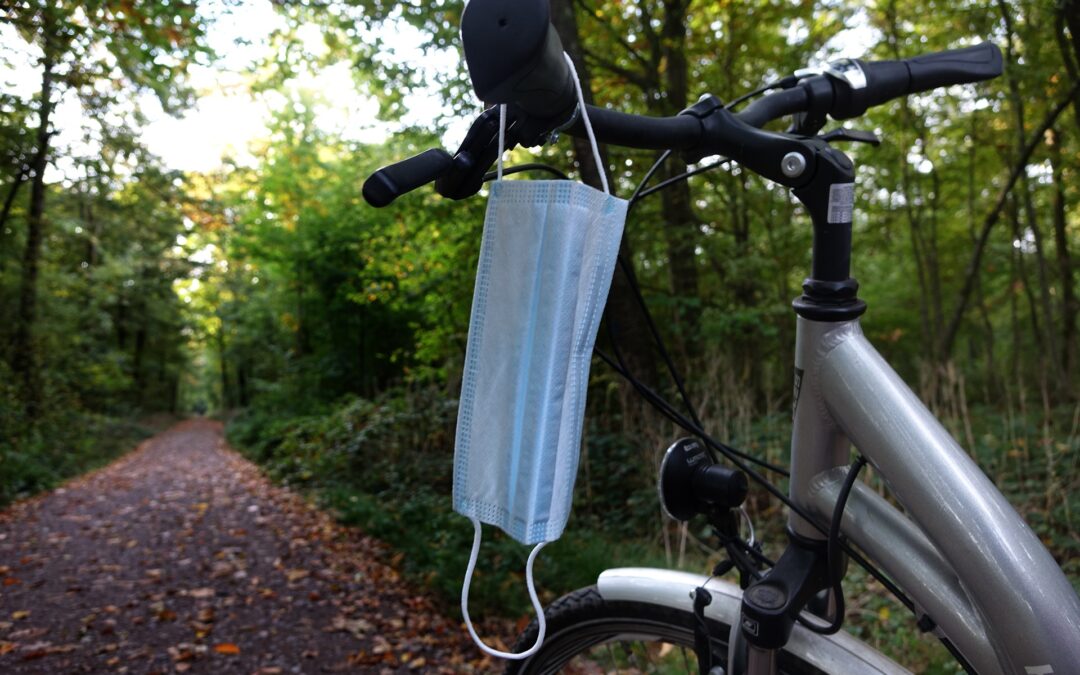Return to Training in the COVID-19 Era: The Physiological Effects of Face Masks During Exercise
Epstein D, Korytny A, Isenberg Y, Marcusohn E, Zukermann R, Bishop B, Minha S, Raz A, Miller A. Scand J Med Sci Sports. 2020 Sep 24;10.1111/sms.13832. doi: 10.1111/sms.13832. Online ahead of print.
Take-Home Message
Healthy male participants could complete a short-term bicycle stress test while wearing a face mask with a minor increase in carbon dioxide levels compared to wearing no mask.
Summary
Mandated restrictions such as wearing facemasks during the COVID-19 pandemic has led to reduced physical activity. Facemasks (e.g., surgical masks, N95 respirators) may be mandated to reduce disease transmission as sports/health clubs and public spaces re-open. However, we know little about how face coverings impact physical activity. Therefore, the authors assessed the ability of 16 healthy and active male participants (~34 years of age) to perform a maximal stress test while wearing surgical and N95 face masks. Participants attended 3 sessions and performed a maximal bicycle stress test (maintaining 55-65 revolutions per minute, while load increased 25 watts every 3 minutes) without a mask, wearing a surgical mask, or wearing an N95 mask. The authors randomized the order of these sessions. The authors continuously measured heart rate, oxygen saturation, respiratory rate, and carbon dioxide concentration in the last part of an exhaled breath.
Participants experienced no differences in time to exhaustion (~18 minutes), rate of perceived exertion, heart rate, oxygen saturation, or respiratory rate between mask sessions. However, the participants had a bit more carbon dioxide in the last part of their exhaled breath while wearing a mask, especially when wearing the N95 mask or using the surgical mask at 100% effort.
Viewpoints
The authors found that participants could complete the task to exhaustion while wearing either mask. These findings complement another study where authors found that cloth and surgical masks had no effect on time to exhaustion, arterial oxygen saturation, tissue oxygenation, rating of perceived exertion, or heart rate during a similar test. However, the authors also discovered that wearing a face mask may cause a mild rise in carbon dioxide levels, especially as the workout load increased. It would be interesting to understand further the effect of this mild increase in carbon dioxide during a session longer than 18-19 minutes and over a longer duration (a season). Additionally, it is still unknown how this would affect athletes with a respiratory condition such as asthma. Presently, these findings suggest that people can wear masks during physical activity for protection; however, prolonged use is unknown. A period of acclimatization may be necessary for athletes to get used to wearing the mask during practice. Furthermore, periods of physical distancing could be implemented so breaks from the mask can safely occur. Currently, medical professionals should encourage physical activity and convey the importance of safe practices to decrease the spread of the COVID-19 virus. The authors also noted that people with obstructive lung diseases like asthma and heart diseases should undergo meticulous evaluation before resuming/starting physical activity with a mask. Authors of a recent review article also echoed this concern.
Questions for Discussion
Do your athletes wear a mask while participating in sports? Have your athletes reported any problems or concerns wearing the mask?
Written by: Jane McDevitt
Reviewed by: Jeffrey Driban
Related Posts
Cardiopulmonary Considerations for High School Student-Athletes During the COVID-19 Pandemic: NFHS-AMSSM Guidance Statement
Return to sports after COVID-19: a position paper from the Dutch Sports Cardiology Section of the Netherlands Society of Cardiology
Position Statement of the Royal Spanish Football Federation for the Resumption of Football Activities After the COVID-19 Pandemic (June 2020)


